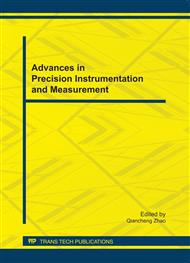p.673
p.679
p.683
p.687
p.695
p.700
p.705
p.711
p.717
A New Image Segmentation Method Based on Improved Fast Implicit Level Set Scheme in X/γ-Ray Inspection System
Abstract:
Digital X/γ-ray imaging technology has been widely used to help people deliver effective and reliable security in airports, train stations, and public buildings. Nowadays, luggage inspection system with digital radiographic/computed tomography (DR/CT) represents a most advanced nondestructive inspection technology in aviation system, which is capable of automatically discerning interesting regions in the luggage objects with CT subsystem. In this paper, we propose a new model for active contours to detect luggage objects in the system, in order to facilitate people to identify the things in luggage. The proposed method is based on techniques of piecewise constant and piecewise smooths Chan-Vese Model, semi-implicit additive operator splitting (AOS) scheme for image segmentation. Different from traditional models, the fast implicit level set scheme (FILS) is ordinary differential equation (ODE). Characterized by no need of any pre-information of topology of images and efficient segmentation of images with complex topology, the FILS scheme is fast more than traditional level set scheme 30 times. At the same time, it performs well in image segmentation of DR images in our experiments.
Info:
Periodical:
Pages:
705-710
Citation:
Online since:
September 2011
Authors:
Price:
Сopyright:
© 2012 Trans Tech Publications Ltd. All Rights Reserved
Share:
Citation:


